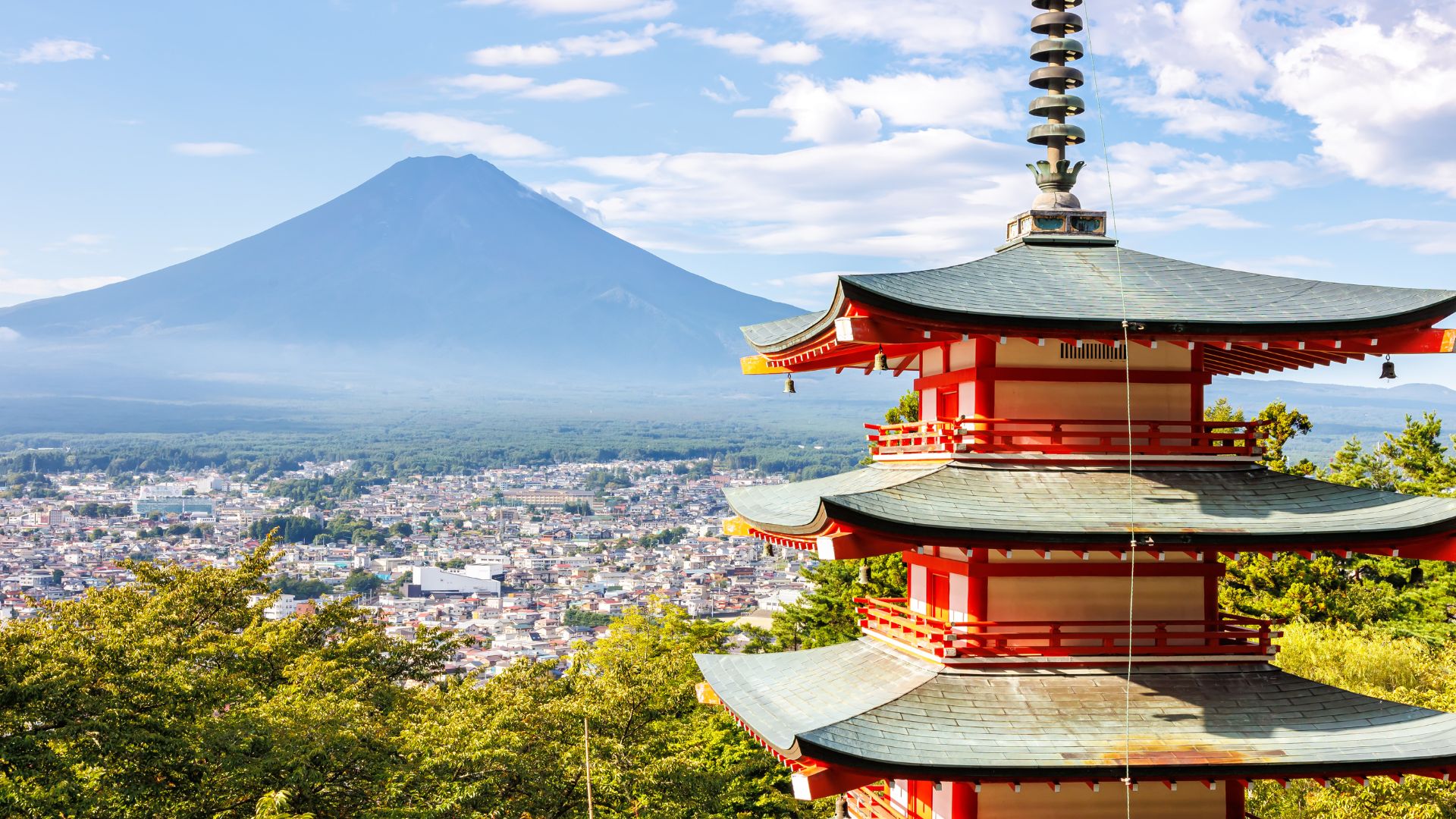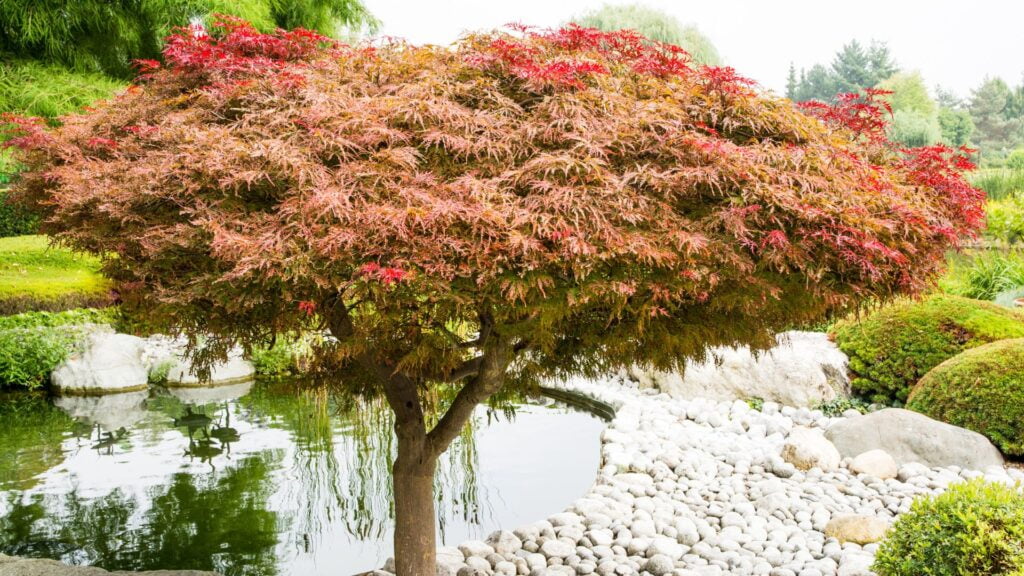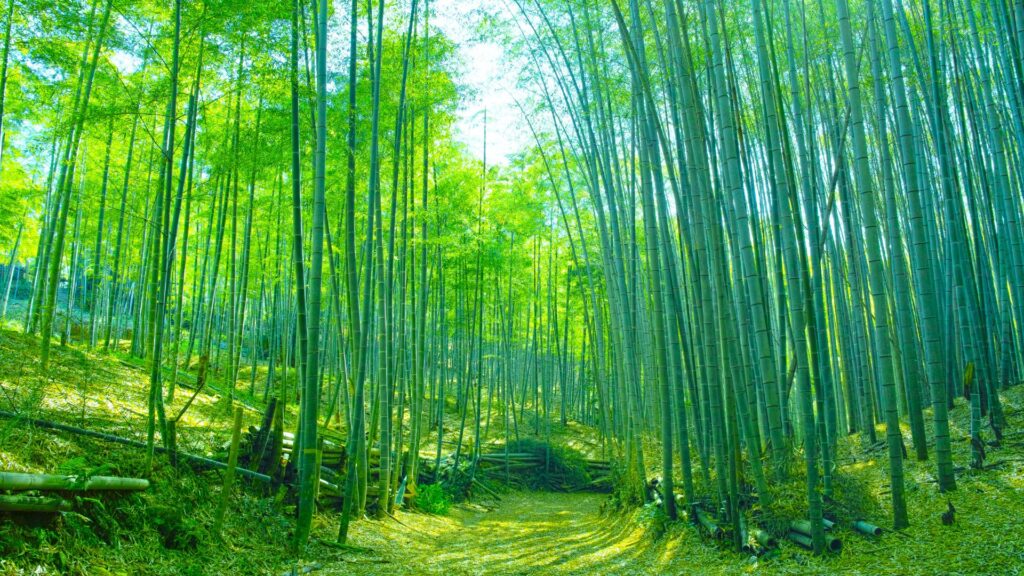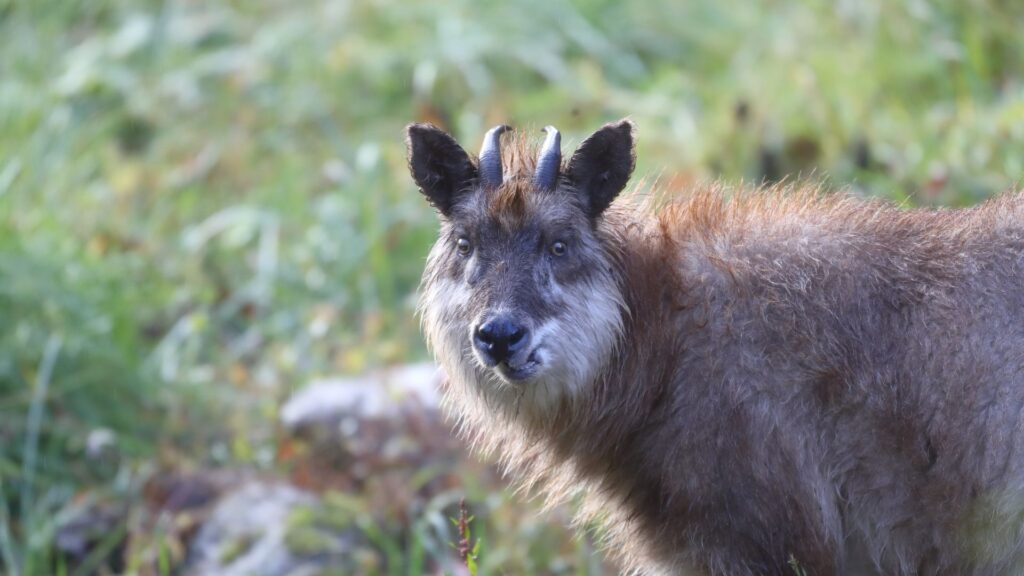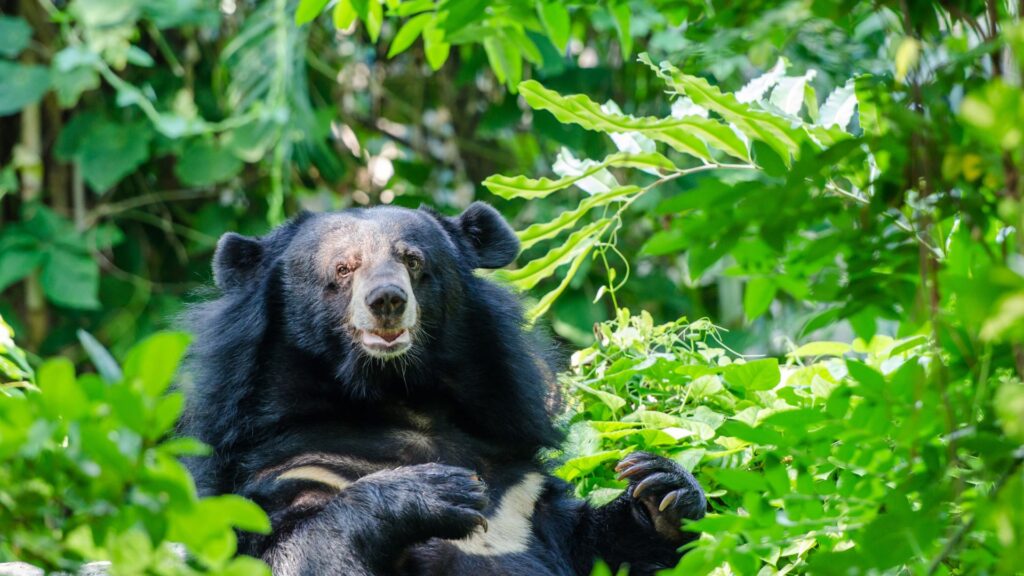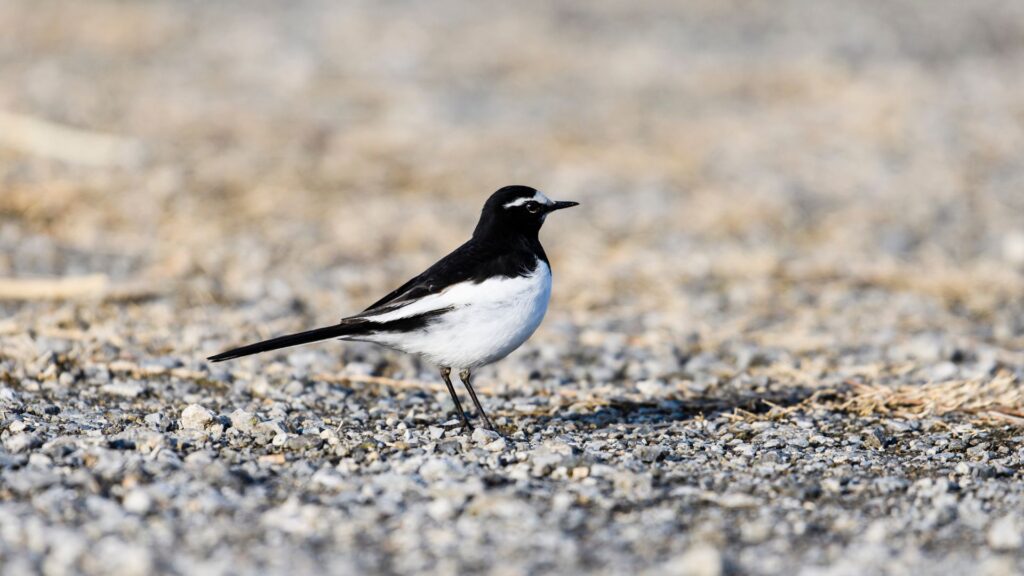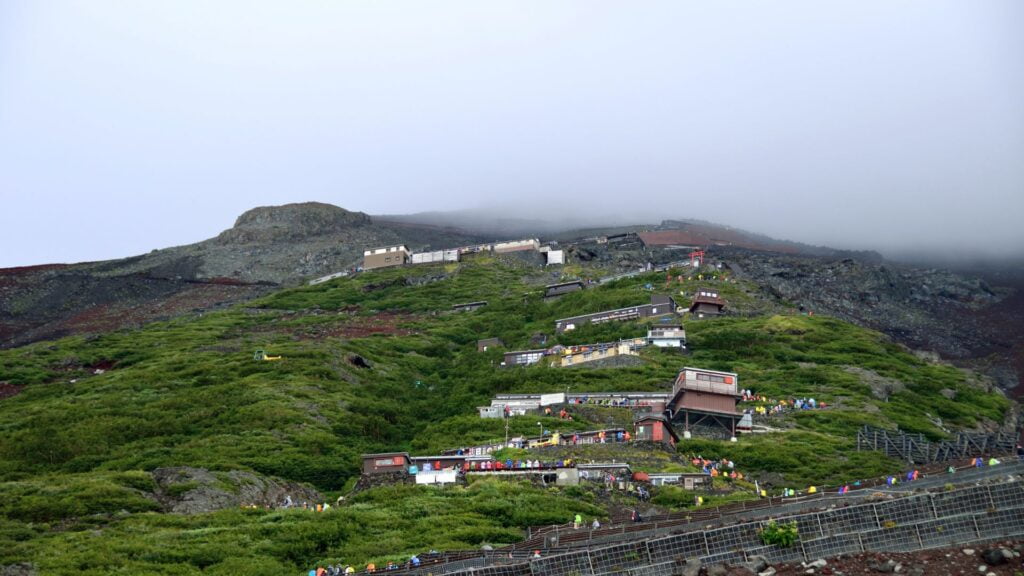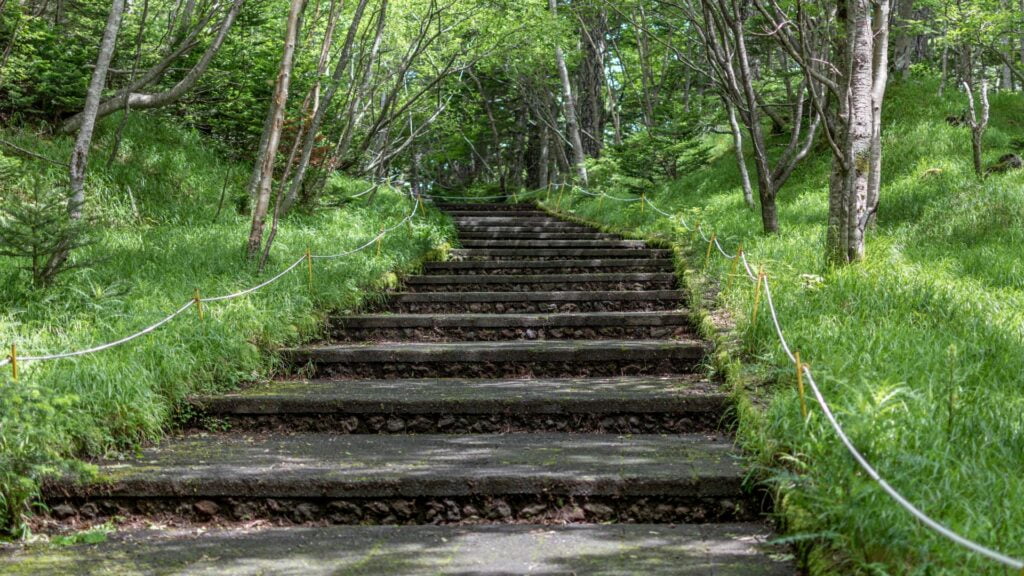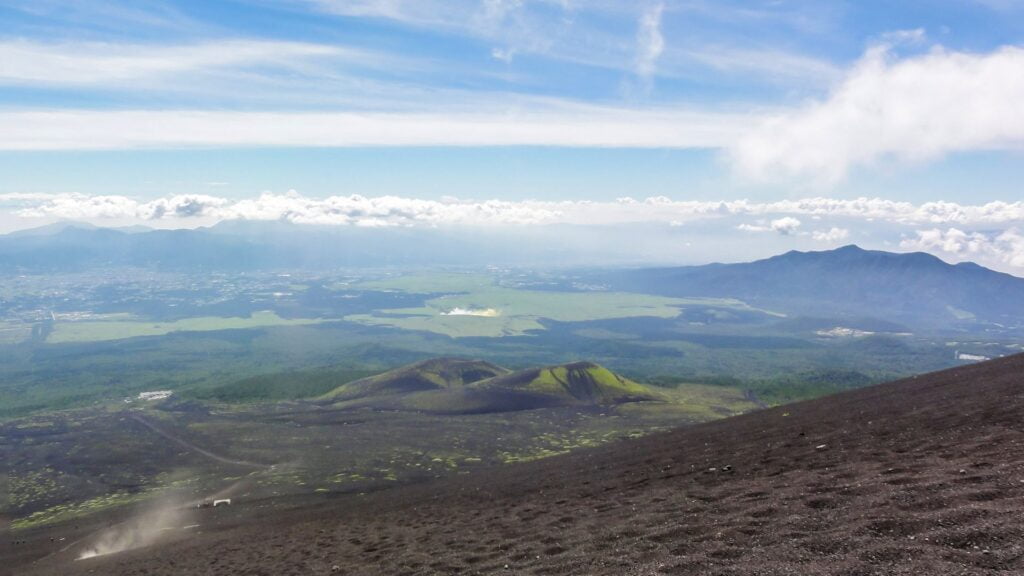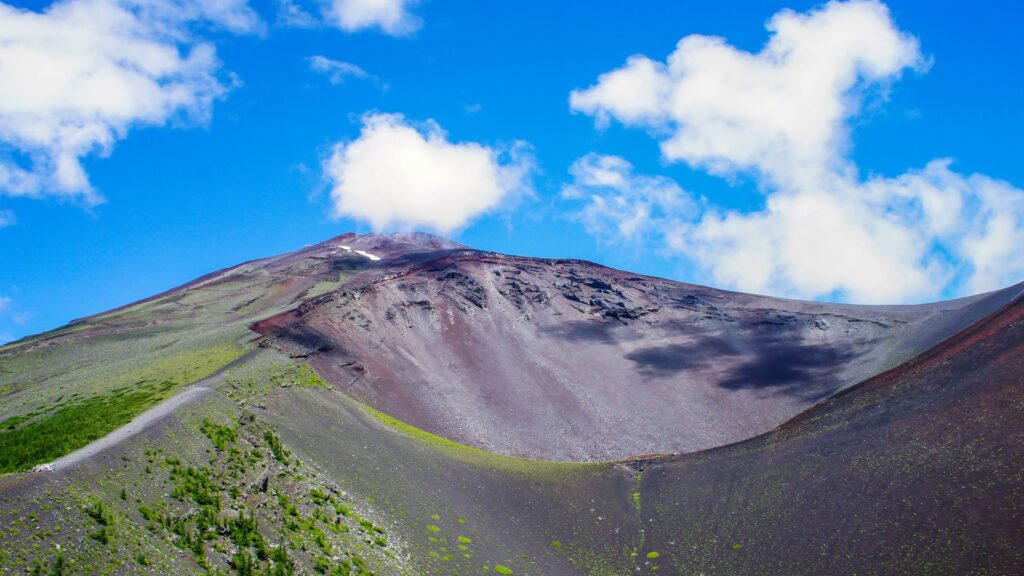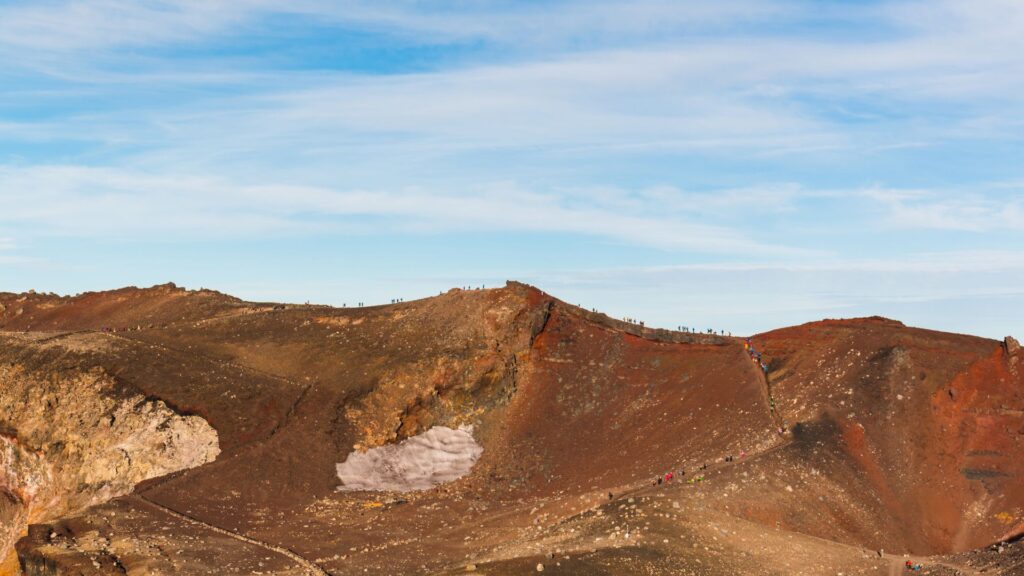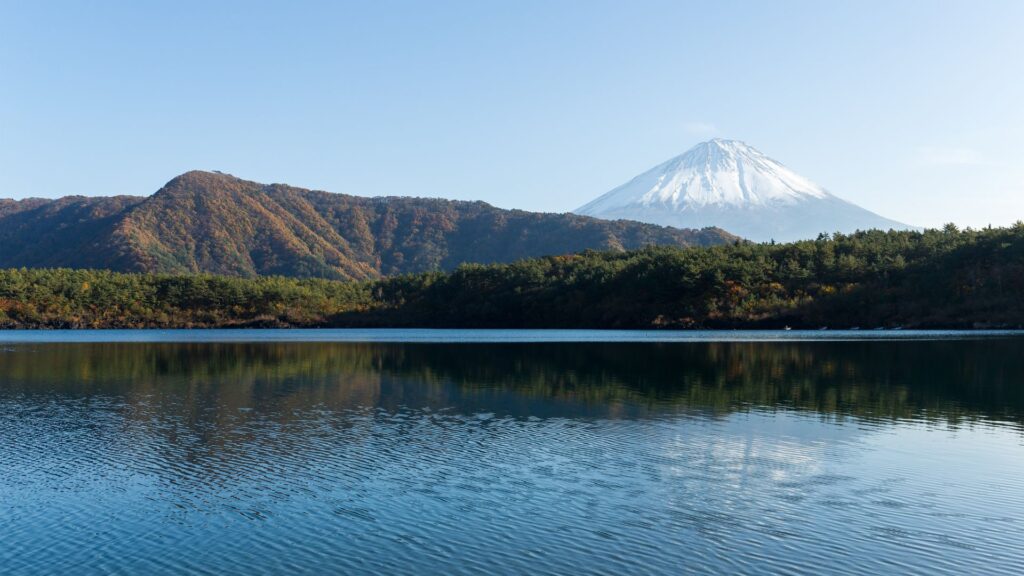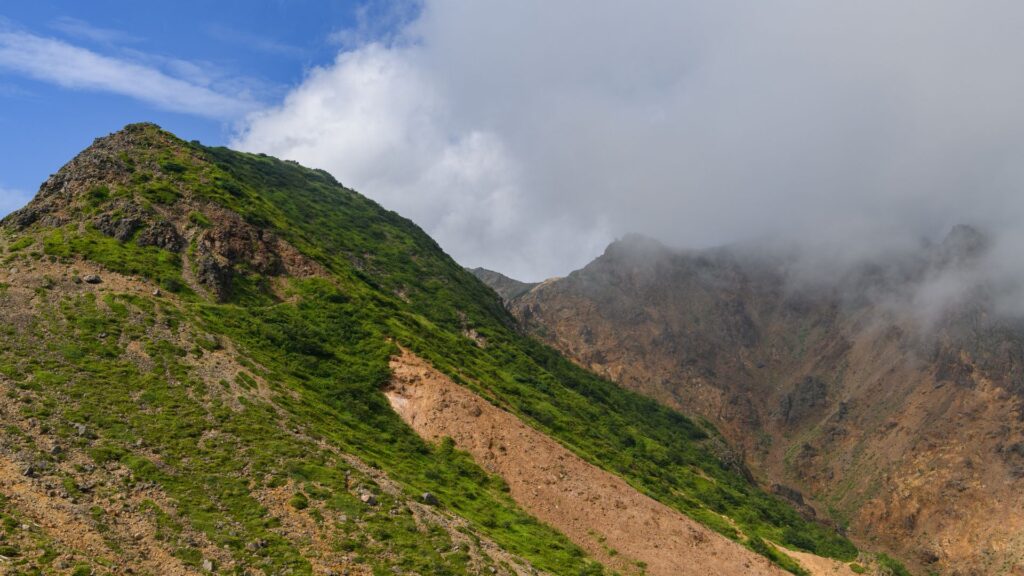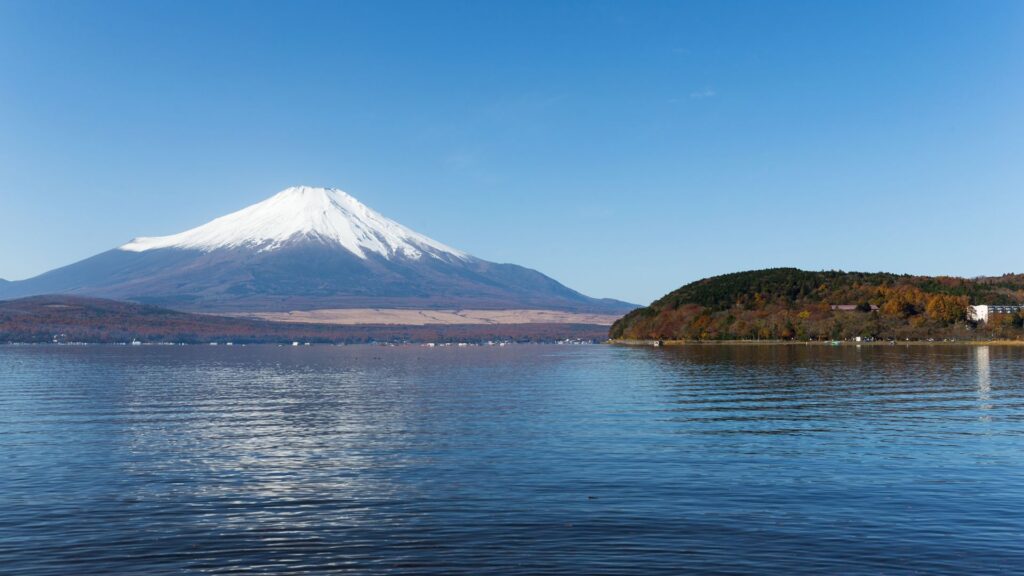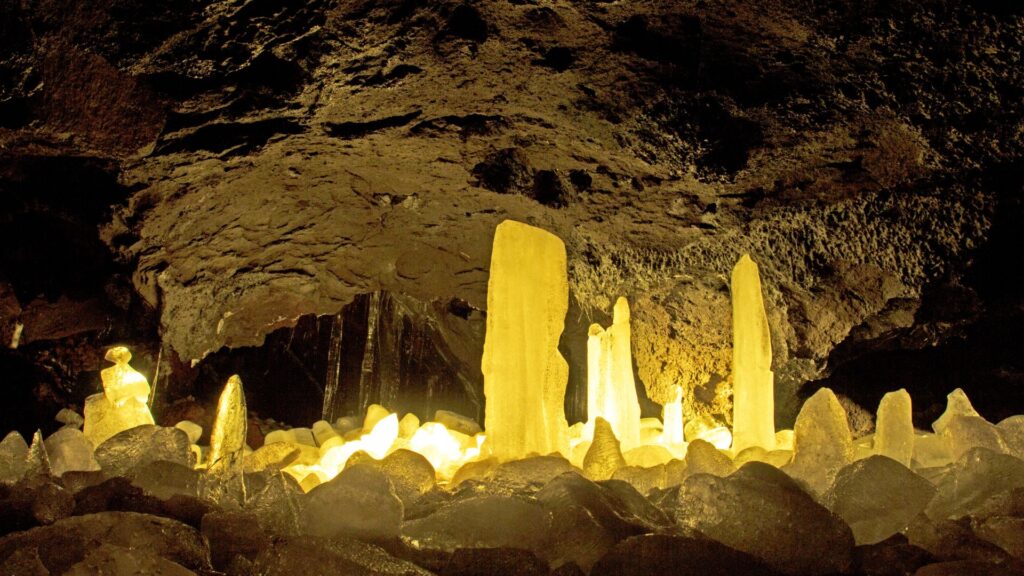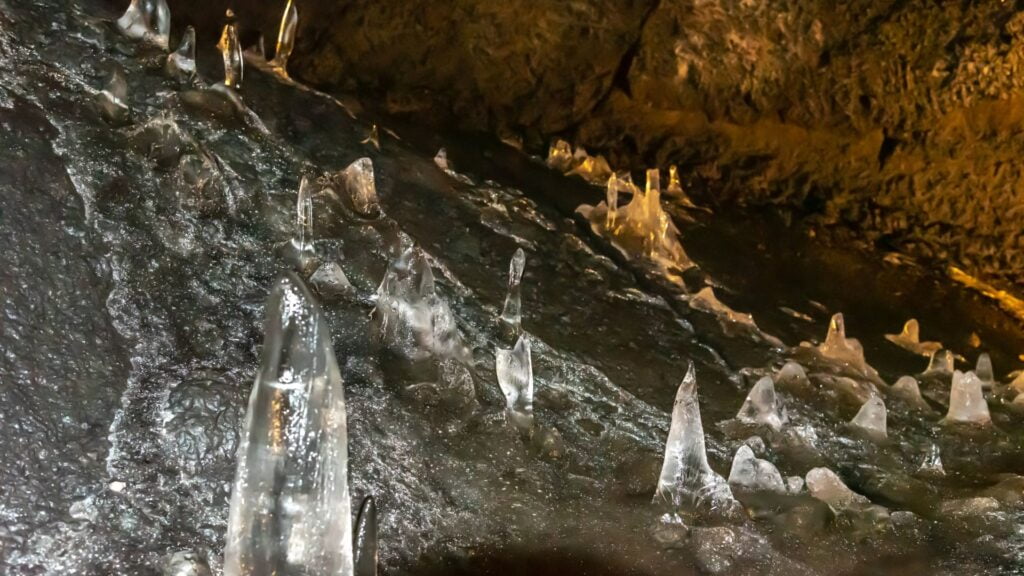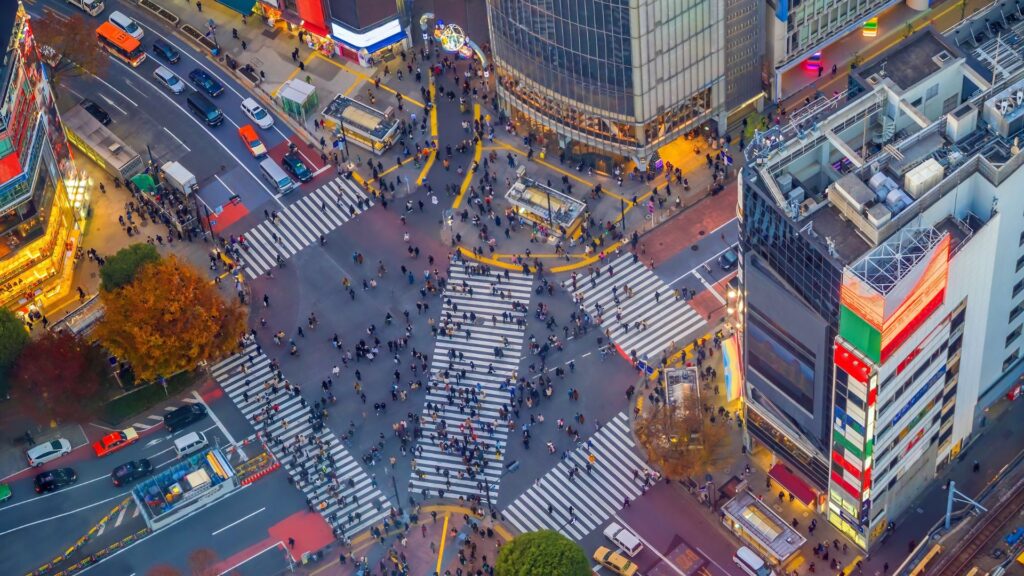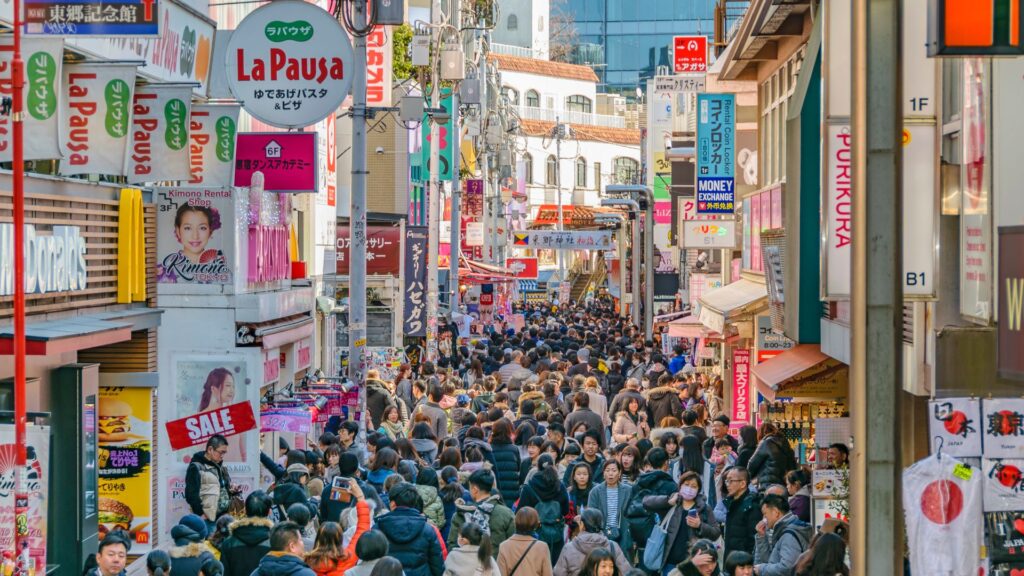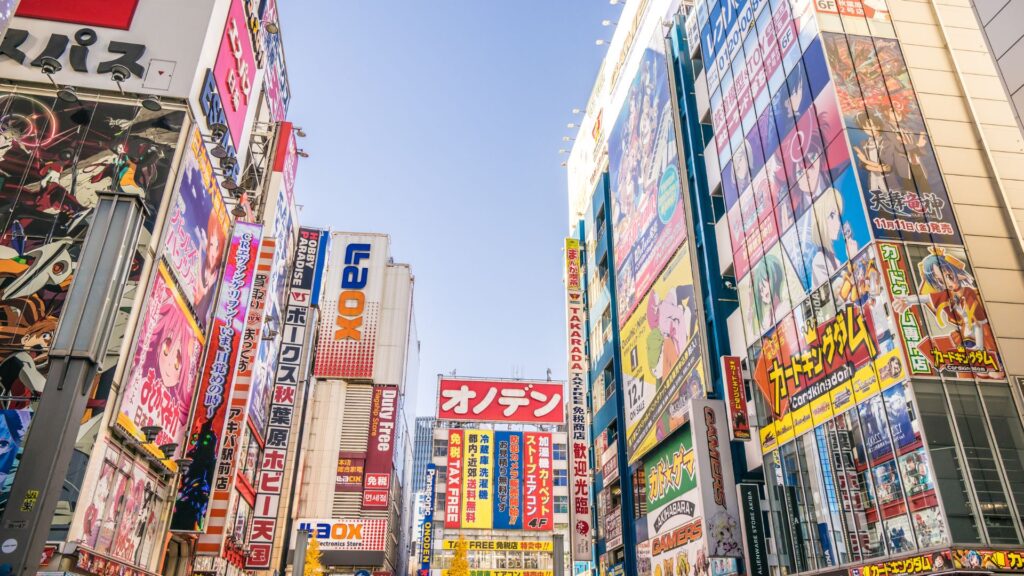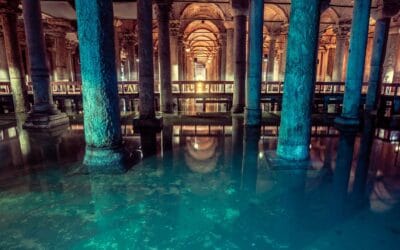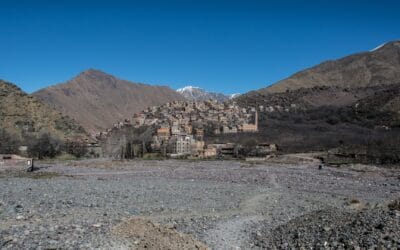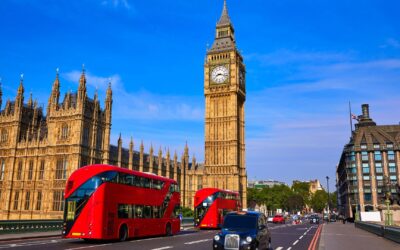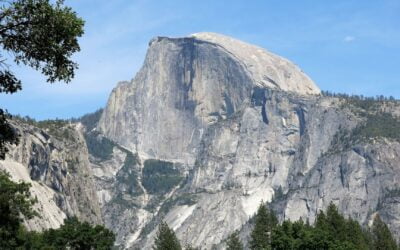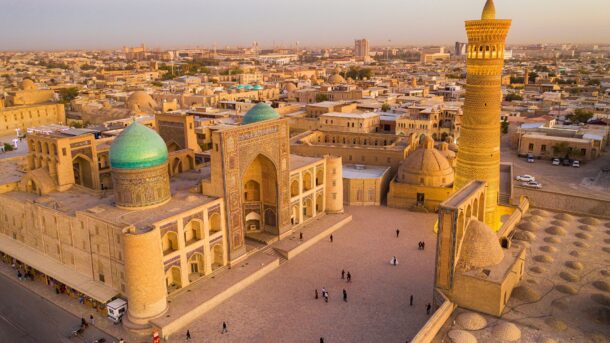Mount Fuji is Japan’s highest peak, standing at 3,776 m (12,389 ft). Located on Honshu Island, about 100 km (62 mi) southwest of Tokyo, this stratovolcano is famous for its symmetrical cone. Even better, the cone is snow-capped for several months each year. If climbing the world’s easiest peaks is your thing and you happen to be in Tokio, trekking Mount Fuji is likely an irresistible opportunity. So here is a Mount Fuji trekking guide that you should regard as a combination of practical and entertaining, aka, as cool.
Things you might want to know before climbing Mount Fuji
Mount Fuji is regarded as of significant cultural importance in Japan, traditionally being regarded as one of Japan’s “Three Holy Mountains” (Sanreizan) along with Mount Tate and Mount Haku. The mountain and its surrounding area were designated as a UNESCO World Heritage Site in 2013 because they inspired countless works of art, literature, and poetry.
Mount Fuji flora
Mount Fuji’s flora is diverse due to the range of altitudes on the mountain, which creates distinct ecological zones. In the Lowland Zone (below 700 m/2,300 ft), the plant life is lush, consisting of broadleaf forests with species like Japanese maple and bamboo groves. The area also has springtime cherry blossoms, adding quite a spectacular pink hue to the landscape.
The japanese maple
Bamboo groves
As you ascend, the vegetation transitions to mixed and coniferous forests. This is the subalpine zone (700-2,500 m/2,300-8,200 ft). Common species that live here include Japanese red pine and white birch. This zone also hosts various wildflowers that add color to the rugged terrain.
The Alpine Zone (above 2,500 m/8,200 ft) is the area with an alpine tundra climate which supports hardy, low-growing plants. Species like the Phyllopsora moss, known for their resilience and unique adaptations to the cold and wind, thrive here.
Mount Fuji wildlife
The slopes and surrounding areas of the mountain are inhabited by 37 recorded species of mammals. Notable among these are the Japanese serow, a goat-antelope species, and the Asiatic black bear, both of which can occasionally be spotted in the more forested regions. Other mammals include Japanese macaques, foxes, and squirrels, which are commonly seen from the base up to the mid-elevations of the mountain.
In case you wanted to see a Japanese serow
An Asiatic black bear doing something between trees
There are about 100 species of birds breeding in the foothills and surrounding forests. Examples include the Japanese wagtail, green pheasant, and various migratory birds that visit during the warmer months for breeding and foraging.
A Japanese wagtail
While the cooler, high-altitude conditions limit the presence of amphibians and reptiles, some species still live in the lower regions. The forest green treefrog, found in moist environments, is one such amphibian. Reptiles, though less common, can also be found in the lower altitudes.
Mount Fuji climbing routes you need to know about
To choose a trek, you may want to think about the things you want to see and how much effort you want to put in achieving your goals. Here is some intel on six trails you can choose from.
Yoshida Trail
This is the most popular and accessible route and starts from the Fuji Subaru Line 5th Station at about 2,300 m (7,546 ft). This trail is said to be ideal for beginners due to its well-maintained path and numerous mountain huts along the way. Yoshida is often crowded, especially during peak climbing season, which can be good, bad, or neither, depending on how you like your trails. The ascent takes about 5-7 hours and descent takes about 3-5 hours.
Yoshida Trail, somewhere between the 6th and 7th station
Subashiri Trail
This trail starts at 2,000 m (6,561 ft) and is connected with the Yoshida Trail near the summit. The less crowded trail comes with lush forests in the lower sections and sandy slopes higher up. Yes – I said sandy slopes! So if you want to have a quick and arguably fun descend, Subashiri is the trail for you. Assuming a fairly typical up-down trajectory, you will need about 5-8 hours to reach the peak and 3-5 hours to return.
Somewhere on the Subashiri Trail
Gotemba Trail
The Gotemba Trail is the longest route, starting at just 1,440 m (4,724 ft). It also has fewer mountain huts, requiring climbers to be more self-sufficient. Some may find this more challenging trail as also the most entertaining one, as it’s where you will find the “Osunabashiri” (meaning “Big Sand Run”) descent, where you can run down the volcanic ash slope! Ascent should take you 7-10 hours, and descent should take you around 3-6 hours. Don’t know about you, but I would use with Gotemba Trail either for both ascending and descending the mountain or at least for the latter.
The Great Sand Run of Gotemba Trail
Fujinomiya Trail
If you are looking for the shortest trail to Mount Fuji, Fujinomiya is the place to go. The trek starts at the highest elevation of the four routes (2,400 m/7,874 ft) but comes with what many would find to be a major perk – views of the Pacific Ocean and the Hoei Crater. If you choose this trail you should reach the peak in 4 to 7 hours and be able to return in 2-4 hours.
The Hoei Crater
Ohachimeguri (Summit Crater) Route
This is a circular trail that starts from the summit. More specifically, it’s a route around the crater that you may enjoy if you want to take a good look at the volcanic landscape and the various peaks surrounding the crater.
Mount Fuji main crater
Mount Fuji 3776 Route
This is a multi-day trek that starts from the sea level and takes about four days. The route is also known as the “Mt. Fuji Tourism Climbing Route 3776,” and spans for approximately 42 km (26 mi).
Starting from either Fujinokuni Tagonoura Minato Park or Fujizuka, the first day’s trek covers about 12.4 km (7.7 mi), transitioning from seaside views through urban areas into natural landscapes. On this day, you will pass by the Fuchi Rokusho Asama Shrine (part of a network of Asama or Sengen shrines dedicated to the worship of the mountain) and Yoshihara Park. On the second day, you will travel for about 14.8 km (9.2 mi) into mountainous terrain and pass by Fuji Hinoki Park and the Omote Fuji Green Camp. Accommodations along the route include herbal hot spring ryokan and farm stays for the first night, and a camping area for the second night.
Camping at Mount Fuji
Camping near Mount Fuji is one way to experience the region. For example, you can camp at Lake Saiko Camp Village Gnome, where you may find a spot for your tent with views of Lake Saiko and Mount Fuji. Activities such as canoeing and guided tours are available.
Also situated by Lake Saiko is Saiko Jiyu, a campground which offers tent rentals and amenities like a shared kitchen and toilets. The location can also be used as the starting point for exploring the Lake Sai Bat Cave.
Fujisan and Lake Saiko
If you want to be near Fuji Subaruland, there’s PICA Fuji Saiko Lake, a place with cabins, tents, and RV spaces. This is one of the better places to go if you want a more comfortable camping experience.
Finally, for a bit of luxury, you have Workshop Camp Resort a place with air-conditioned cabins and villas with private bathrooms.
Mountain huts
Camping on Mount Fuji is not permitted. As such, if you want to sleep while on one of the mountain’s trails, you will have to stay in a mountain hut. You will have to make a reservation and it’s best to do it in advance to make sure you find the right spot for you.
These huts are quite interesting and providebasic facilities, including sleeping areas and meals. Prices range from 6,000 to 8,000 yen ($52-69/€47-63) per night, with some offering hourly rest rates.
Most trails are located on the Yoshida Trail, with popular ones including Fujisan Hotel and Taishikan Hut. Of course, you will also find huts on the Subashiri Trail (e.g., Kikuya, Taiyokan), the Gotemba Trail (e.g., Hanzobo, Waraji-kan) and the Fujinomiya Trail (e.g., Munatsuki Sanso, Hoei Sanso).
Things to do when you reach Mount Fuji summit
1. Experience the Goraiko
The sunrise at the summit of Mount Fuji has its own name -Goraiko, which means “honorable arrival of light”. A Goraiko is that experience where you view the sun rising above the horizon and painting the sky with vibrant colors. To witness this, you may have to start the ascent late at night or early in the. The sunrise times vary from 4:21 a.m. in early July to around 5:05 a.m. by the end of August.
2. Explore the crater
Remember the Ohachimeguri route? If you have enough energy left after climbing the mountain, why not spend a few hours around the crater, taking a look at the eight peaks surrounding the crater, including Kengamine Peak, which is the highest point in Japan.
Mt. Kengamine. To climb or not to climb?
3. Climb the Kengamine Peak
Reaching Kengamine Peak involves a short but challenging hike from the crater’s edge. The terrain here can be rocky and windy, requiring caution. However, you may well find the effort worth it, as you will stand at the highest point in Japan.
4. Send a postcard
I’m fairly sure most of you did not think about this. While at the summit, you can send postcards from Japan’s highest post office. You can only find the office during the climbing season. Once you’ve sent a postcard, consider going to one of the small shrines and purchase a souvenir.
Best seasons to trek Mount Fuji
There’s an official climbing season that runs from early July to early September. This period is chosen due to the favorable weather conditions, with milder temperatures and minimal snow, making the trails more accessible. No surprise here. All four main routes—Yoshida, Subashiri, Gotemba, and Fujinomiya—are open during this time, with specific opening dates for each trail.
If you like crowds, is best to climb the mountain from late July to late August. If you don’t like large crowds, the first weeks of July may be a better option, except for the fact that the weather is somewhat more unpredictable.
While it is technically possible to climb Mount Fuji outside the official season, it’s discouraged due to weather conditions, which potentially include snow, ice, and the risk of avalanches. It’s also important to keep in mind that during the offseason, most mountain huts and facilities are closed, and rescue services are limited.
The costs of trekking Mount Fuji
The costs of climbing the mountain will typically include accommodation, trail fees, and miscellaneous expenses. The most common route to Mount Fuji starts from Tokyo. A round-trip bus ticket from Tokyo to the Fuji Subaru Line 5th Station costs around 5,400 yen ($47/€41). From Kyoto, taking a night bus to Kawaguchiko and then a second bus to the trailhead costs about 18,500 yen ($161/€141
Starting in the 2024 climbing season, there will be a mandatory fee of 2,000 yen ($13/€12) for those using the Yoshida Trail. This fee supports conservation and safety measures on the mountain. In addition, there is a suggested voluntary contribution of 1,000 yen ($6.70/€6)
Prices for food and water increase as you ascend the mountain. A bottle of water can cost up to 500 yen ($4.50/€4), and a simple meal at a mountain hut can cost around 1,000 to 2,000 yen ($9-18/€8-16).
Using the restroom facilities on the mountain costs between 100 and 300 yen per use (approximately $0.90 to $2.70 or €0.80 to €2.20), so you may want to carry some small change
How to get to Mount Fuji
One of the most straightforward ways to reach Mount Fuji is by taking a direct bus from Tokyo. Buses depart from Shinjuku Expressway Bus Terminal and take about 2 to 2.5 hours to reach Kawaguchiko Station or, if it’s the climbing season, directly the Fuji Subaru Line 5th Station. The fare ranges from 1,800 to 2,700 yen ($17-25/€15-23) depending on the bus service. After arriving at Kawaguchiko Station, local buses run hourly to the Fuji Subaru Line 5th Station, which is the starting point for the Yoshida Trail. This leg of the journey takes about 50 minutes.
There is also atrain that runs directly from Shinjuku Station to Kawaguchiko Station in under 2 hours. The Fuji Excursion Limited Express offers reserved seating, power outlets, and free Wi-Fi. Advance reservations are recommended due to limited availability. The one-way fare for the Fuji Excursion from Shinjuku to Kawaguchiko is approximately 4,100 yen ($37/€34), which includes a base fare of 2,500 yen and a limited express fare of 1,600 yen.
An alternative is to take a JR Chuo Line train from Shinjuku to Otsuki, then transfer to the Fujikyuko Line to Kawaguchiko. This journey takes around 3 hours in total and is fully covered by the Japan Rail Pass. The JR Chuo Line fare from Shinjuku to Otsuki is about 1,340 yen ($12/€11) for a local train, and 2,360 yen ($21/€20) for a limited express train. From Otsuki, the Fujikyuko Line to Kawaguchiko costs 1,170 yen ($10/€8). From Kawaguchiko, you can take a local bus to the 5th Station.
No need to say, you can also rent a car. The drive to Mount Fuji is about 100 km (62 mi) and typically takes 2 to 3 hours depending on traffic. Renting a car in Tokyo typically costs around $39-66 (€36-61) per day, depending on the type of car.
A few things you might want to know before arriving in Japan
Japan primarily uses the yen (¥). Coins range from ¥1 to ¥500, and banknotes come in ¥1,000, ¥2,000, ¥5,000, and ¥10,000. Cash is widely accepted, especially in rural areas and small businesses where credit cards might not be accepted. Major cards like Visa, MasterCard, and JCB are increasingly accepted in urban areas, hotels, and chain stores.
Prepaid IC cards like Suica and Pasmo are very convenient for public transportation and small purchases at convenience stores and vending machines. These cards can be topped up and used similarly to contactless payment methods.
Hiking Mount Fuji by yourself vs. with a guided tour
As mentioned, Mount Fuji is relatively easy to climb and, as such, there’s no good reason to strongly recommend a guided tour. As such, if you want to set your own pace and schedule feel free to do so. However, do note that you must handle all logistics, including booking mountain huts and ensuring you have the necessary gear.
Guided tours to Mount Fuji are a great option if you want others to take care of the logistics and/or if you want to meet other travelers. Tours typically include transportation, accommodations, meals, and the expertise of a certified guide who can hopefully provide valuable insights. Prices of guided tours can range from ¥39,800 ($345/€311) for basic group tours to ¥62,150 ($540/€485) for more comprehensive packages that include additional amenities and services.
One tour with a few reviews is Mt.Fuji Trekking 1 Day Tour up to the summit. On this tour, you’ll begin your walk from the Fifth Station, and hike the Yoshida trail until you reach the Seventh Station. There is the option to climb to the very peak of the mountain.
If you want to see Mount Fuji but don’t feel like hiking to the top, feel free to check out some Mount Fuji guided tours and activities that take you to the 5th Station only or other lower regions.
Things to do after climbing Mount Fuji
After reaching the highest peak in Japan, you may well be ready to explore other areas in the region. For example, you may go to Fuji-Q Highland, a place renowned for its extreme roller coasters like Do-Dodonpa, which boasts the fastest acceleration in the world, and Takabisha, the steepest roller coaster globally. The park also features a supposedly terrifying haunted house adventure and a Thomas Land.
Another option is to go for a forest adventure in Forest Adventure Mt. Fuji, an adventure park with zip lines and challenging obstacle courses set high in the trees. Are you ready to test your agility?
Also, while you’re around, why not enjoy a whimsical ride on a swan-shaped paddle boat on Lake Yamanaka, or take a more relaxed cruise on the amphibious bus that tours both land and water? If you like the lake, consider renting a bicycle and explore the 14-kilometer (8.6 mi) cycling road around Lake Yamanakako.
Lake Yamanaka
All of these activities might make you sweat a lot, so perhaps take a break at Narusawa Ice Cave and Fugaku Wind Cave. Located in the Aokigahara Forest, these natural ice caves offer a cool experience with ice formations. There’s an apparently cool guided ice cave tour in the Aokigahara Forest that you might want to check out.
Inside Narusawa Ice Cave
And this is the inside of Fugaku Wind Cave
And if you’re feeling cold, consider rewarming yourself at Oshino Shinobi no Sato (Ninja Village), a garden where you can learn about ninjas, practice shuriken throwing, and explore trick houses.
Last but not least, Tokio is near, so take a city break. Neighborhoods you might enjoy include Shibuya, known for its bustling crossing and vibrant nightlife, and Harajuku, known for its quirky fashion and unique shops. Another neighborhood some may find interesting Akihabara -the go-to place for electronics, anime, and gaming enthusiasts.
Aerial view of Shibuya at night in Tokyo
Takeshita Street looks pretty crowded
Akihabara looks rather quirky
Bottom line: This was a cool Mount Fuji trekking guide
I know, I know, coolness is subjective. But let’s face it, this guide is pretty comprehensive. Whether you want to call it cool or not, one thing is likely – you now know more about Mount Fuji than ever before. With this knowledge at hand, you can pick a trail or two and plan all sorts of activities in and around the mountain.
So, are you ready for the Goraiko experience?

